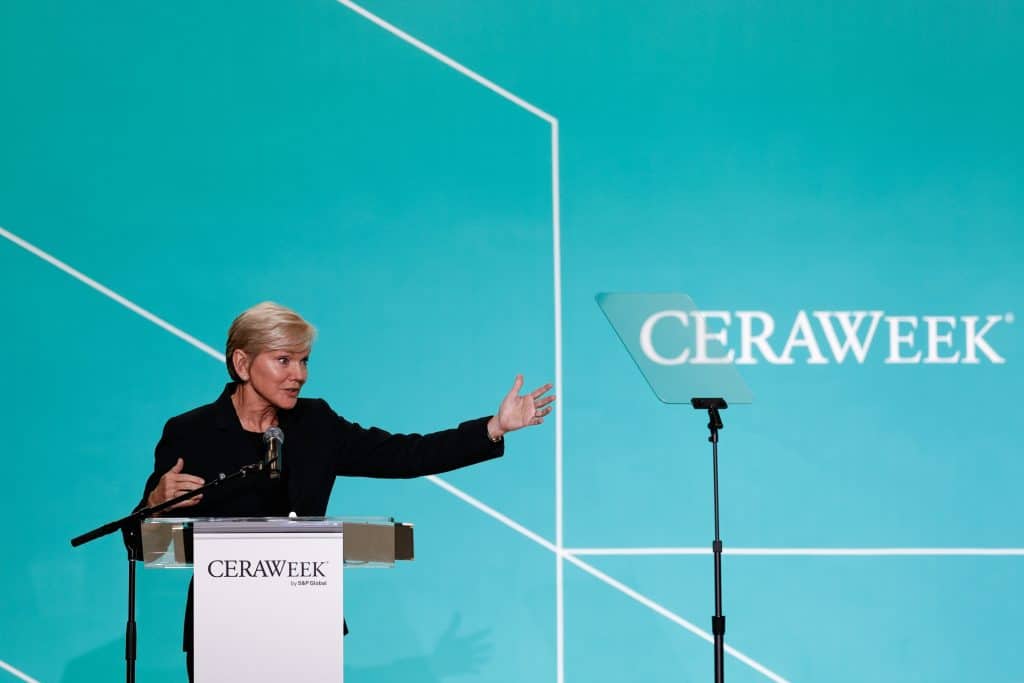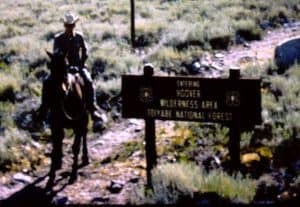One of the Toiyabe National Forest’s larger fires of my fire prevention guard era was ignited by a discarded cigarette around noon on June 27, 1966. This blaze, on the Carson Ranger District about a dozen miles south of Reno, quickly blew up and crossed the Nevada state highway which led to the Slide Mountain Ski Area and Lake Tahoe. All traffic on this busy road was stopped. Significant resources—residences, a ski area, a beautifully-timbered watershed—were threatened.
A new Forest Service tractor-lowboy rig, transporting a bulldozer for fireline construction, was trapped on the highway by the fire it was to help control. The truck driver and cat skinner escaped, but the rig and cat were destroyed. The Toiyabe had a real project fire on its hands.
Fire Boss Blaine Cornell sized up the situation. A spot weather forecast called for strong down-canyon winds and low humidity through the afternoon. He planned to stop the fire’s rapid eastward spread toward homes and ranches first, then control its mountainous northern and western flanks. Manpower and equipment were ordered for a four-sector fire, and that’s where I came in.
When the forest supervisor’s office requested two qualified crew bosses for the night shift from the Bridgeport Ranger District, range conservationist Ken Genz and I were dispatched to the fire. It was dark by the time we first saw the fire—a hellish orange glow along a two-mile front atop a ridge off to the West—from the Washoe Valley. The Galena Creek Fire would be the biggest I had ever fought. We turned off U.S. 395 and made our way to the fire camp.
Ken and I arrived just in time for night shift assignments and too late to eat. We gulped black coffee during a quick briefing around a map board. By then, the fire’s eastward run had been stopped by a backfire. The night shift would build a three-mile line around its northern and western flanks. Two line locators were needed, and we were them. Our job was to lead cats up both flanks to head the fire off during the cool night hours. Crews with hand tools would follow our cats at a safe distance, improving the lines that would link up along the top of the ridge and corral the fire by morning. Except for the cats Ken and I would be leading, we’d be on our own.
After the usual delays inherent in working with heavy equipment, I was leading my cat up the fire’s northern flank.
The night was dark, but the fire on my left provided so much light I didn’t need the headlamp on my hardhat. Trees continued to torch but, as expected, the fire was now advancing more slowly. I soon had the hang of nighttime line locating, and worked the cat as close to the fire as I could while avoiding heavy timber that would slow it down. I put all I knew—and all the cat skinner knew—about firefighting into the job, and we made steady progress along the fire’s flank as the night wore on.
As far as I know, I made only one mistake that night. But it was a big one, and I came close to paying dearly for violating a cardinal rule. Carelessly allowing myself to get downslope of the cat, I suddenly gained a whole new perspective on boulders. I survived.
Just after dawn, Ken and I tied our cat lines together. If not yet controlled, the Galena Creek Fire was contained. The sector boss arrived as I enjoyed the views of Lake Tahoe and Washoe Lake. Fresh crews were on their way up the mountain to relieve the night shift, and we were to return to the fire camp. Food and rest at last! Well, almost. First we had to get there.
Wanting to see the rest of the fire, I opted to walk off the mountain along Ken’s cat line. The effects of the fire’s rapid and erratic spread were obvious. While most of the area inside the line was blackened, some small islands of timber had been bypassed and were as green as ever. By the time I hit the state highway, which I would follow for about three miles to the fire camp, the sun had chased the chill from the morning air. I met fresh crews on their way to the western flank.
After a while, I came upon the remains of the trapped tractor-lowboy and cat rig. A nice new outfit only a day before, it was all blistered metal and burned rubber. I walked on through yesterday’s cool, green forest—now a charred and smoldering wasteland.
About that time, at ten o’clock in the morning, the Galena Creek Fire was declared controlled at just over 1,200 acres. Two homes had burned.
After night shift assignments, during which the previous night’s initial attack line locater was that night’s mop-up squad boss, Ken and I were released and returned to Bridgeport.
Adapted from the 2018 third edition of Toiyabe Patrol, the writers memoir of five U.S. Forest Service summers on the Toiyabe National Forest in the 1960s.



